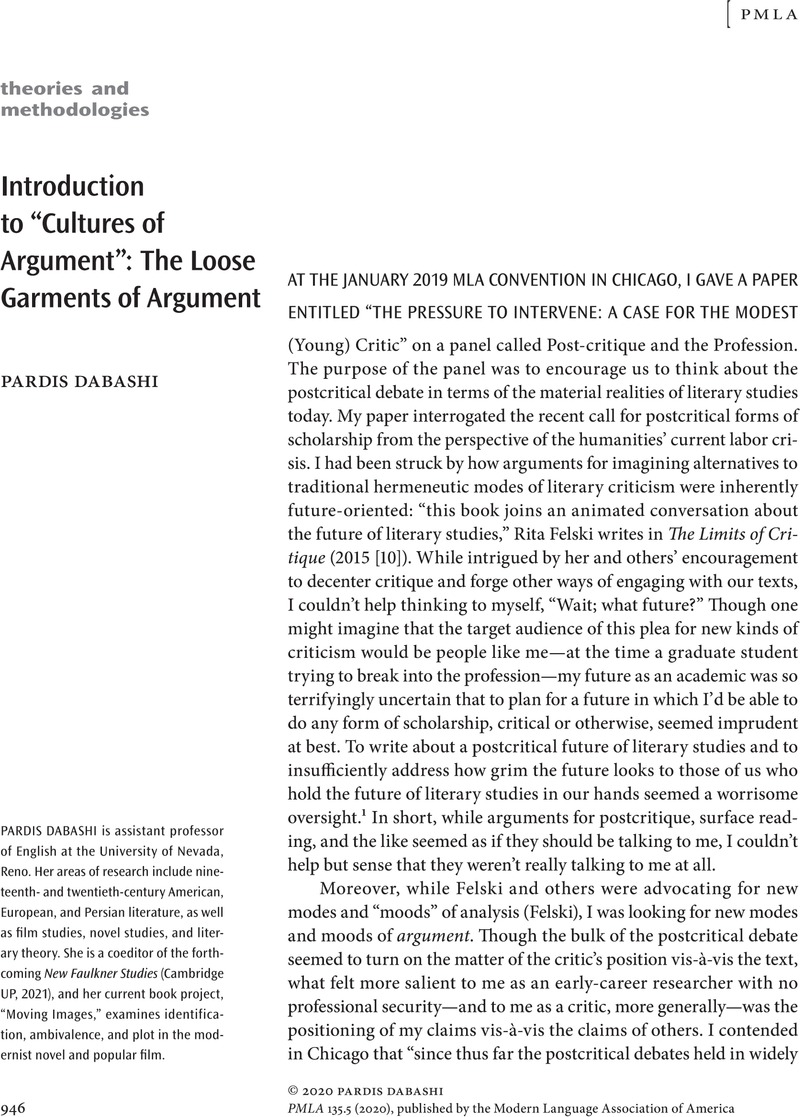@jaxwendy (Jacquelyn Ardam). “I've been watching the conversations around @MModernity's ‘Weak Theory’ issue unfold from the sidelines and here is my take: sure is easy to claim weakness when you have tenure or TT job. The Q of weakness looks v different from the land of the contingent.”
Twitter, 21 May
2019, twitter.com/jaxwendy/status/1130937926156738562.
Google Scholar